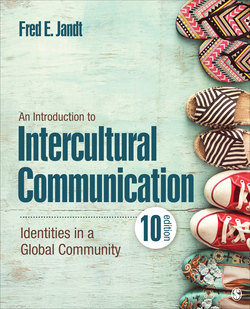Читать книгу An Introduction to Intercultural Communication - Fred E. Jandt - Страница 24
На сайте Литреса книга снята с продажи.
Ethnicity
ОглавлениеAs you read earlier, the term ethnicity refers to a group of people of the same descent and heritage who share a common and distinctive culture passed on through generations. Ethnic groups can exhibit such distinguishing features as language or accent, physical features, family names, customs, and religion. Ethnic identity refers to identification with and perceived acceptance into a group with shared heritage and culture (Collier & Thomas, 1988). Sometimes, the word minority is used. Technically, of course, the word minority is used to describe numerical designations. A group might be a minority, then, if it has a smaller number of people than a majority group with a larger number. In the United States, the word majority has political associations, as in the majority rules, a term used so commonly in the United States that the two words have almost become synonymous. According to the Oxford English Dictionary, the term minority was first used to describe ethnic groups in 1921. Since that time, advantage has been associated with the majority, and disadvantage has been associated with the minority.
Just as definitions of words such as culture have changed, the way words are written has changed. There has been considerable controversy surrounding whether terms such as Italian-American should be spelled open or hyphenated. It has been argued that immigrants to the United States and their descendants have been called “hyphenated Americans,” suggesting that their allegiance is divided. Style manuals such as the American Heritage Dictionary of the English Language, 5th edition, suggest omitting the hyphen. In this text, the term African-American is used for American Black persons of African descent while Black is used for peoples of any national identification. However, when reporting published studies, we adhere to the identifications reported by researchers.
That ethnic identity can be the basis of a cultural identity and affect communication with others outside that group has been demonstrated by Taylor, Dubé, and Bellerose (1986). In one study of English and French speakers in Quebec, they found that though interactions between ethnically dissimilar people were perceived to be as agreeable as those between similar people, those same encounters were judged less important and less intimate. The researchers concluded that to ensure that interethnic contacts were harmonious, the communicators in their study limited the interactions to relatively superficial encounters.
